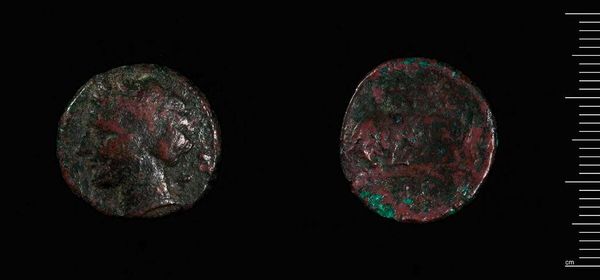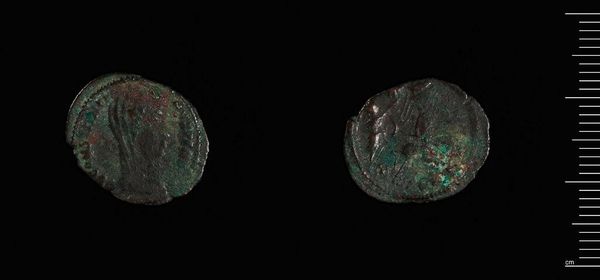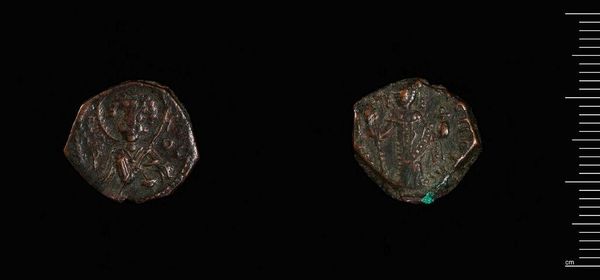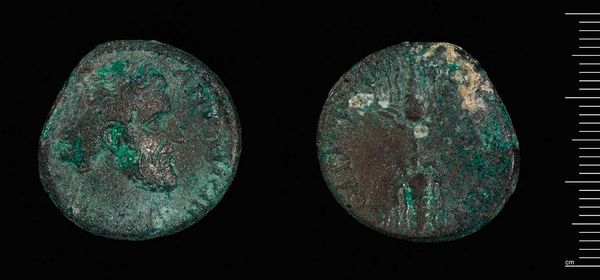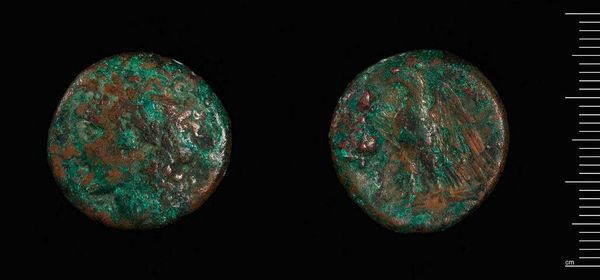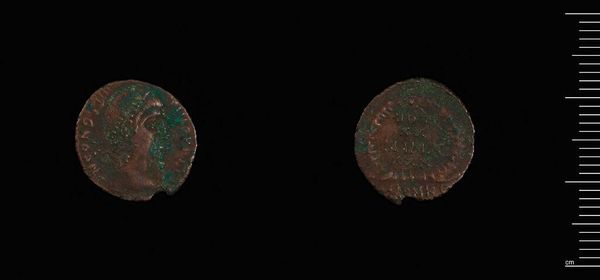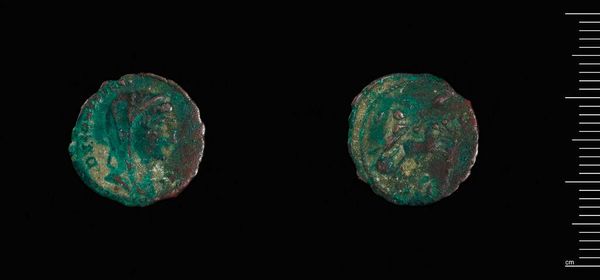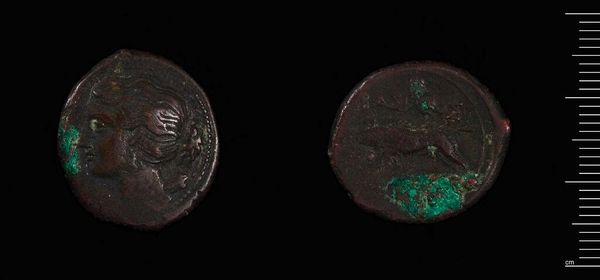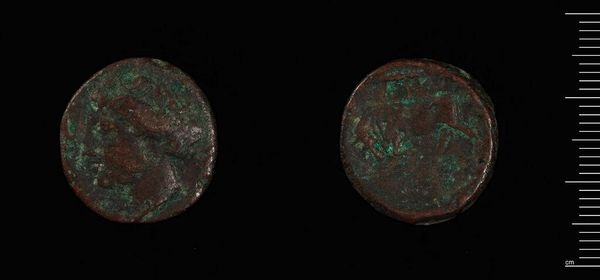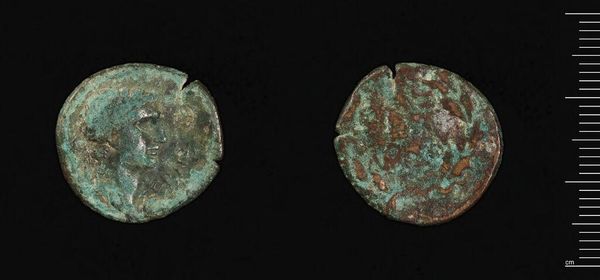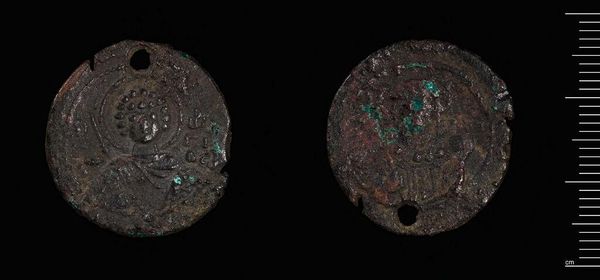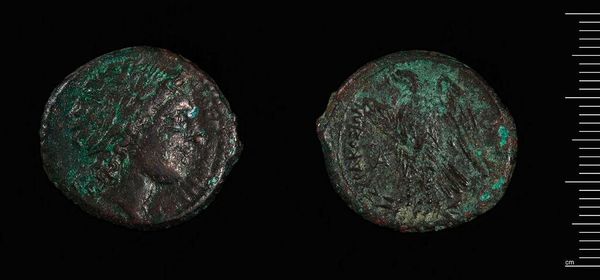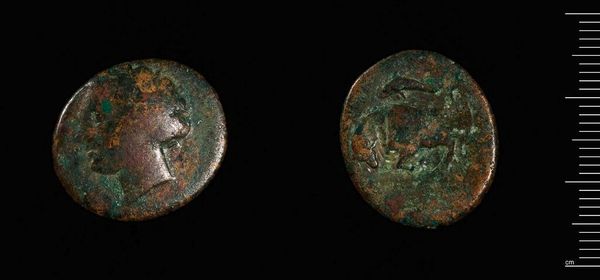
Dimensions: 4.21 g
Copyright: CC0 1.0
Editor: Here we have a coin, reportedly made by Timoleon, the Tyrant of Syracuse. Look at the wear on the metal. What can we learn from this object about the society that produced it? Curator: The material itself—likely bronze or copper—speaks to resource availability and trade networks. Notice the verdigris, the green patina. Its presence indicates the coin's prolonged interaction with its environment, its journey through time and the earth. Editor: So, the coin’s value lies in its materiality and the labor involved? Curator: Precisely. Consider the process of minting: the mining, the smelting, the die-making, the striking. Each step involved human labor and reflects the social and economic structures of Syracuse. It’s a microhistory of production and consumption. Editor: Fascinating. I hadn't considered the coin as a record of labor. Curator: Thinking about the coin in this way reveals hidden dimensions of history, focusing on the tangible realities of its creation and use. It helps us see beyond the images of rulers and generals. Editor: I see. Thanks for illuminating that.
Comments
No comments
Be the first to comment and join the conversation on the ultimate creative platform.
